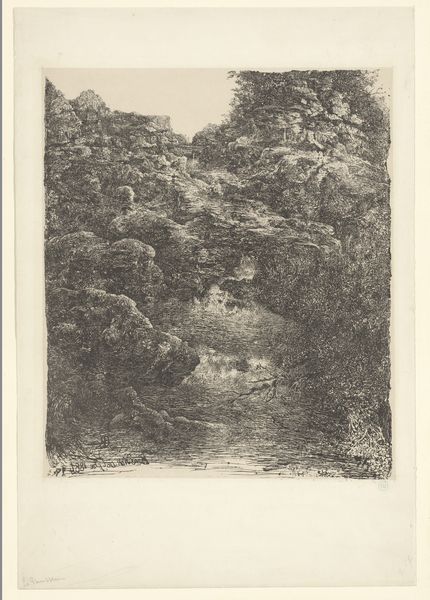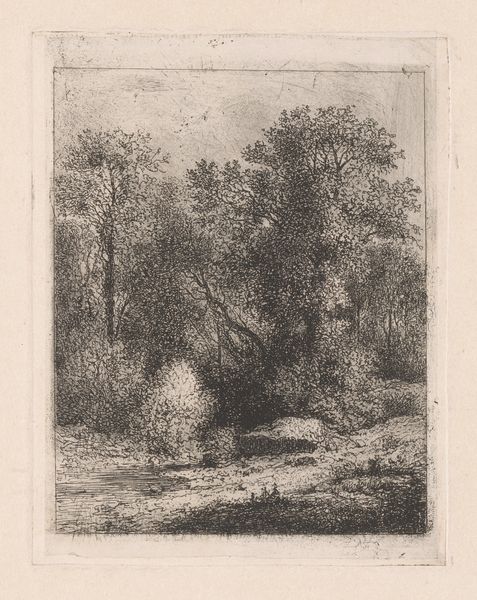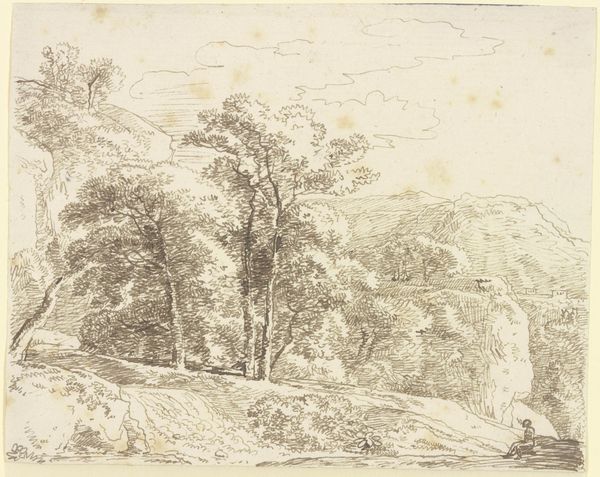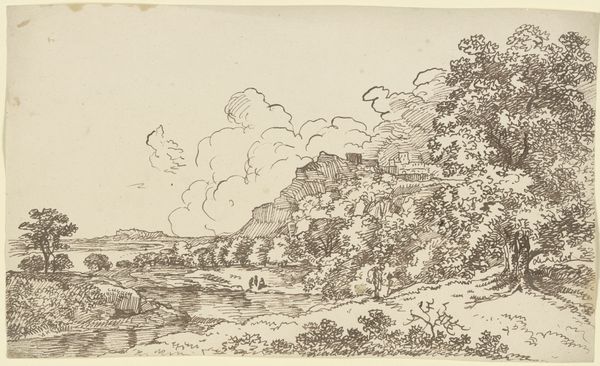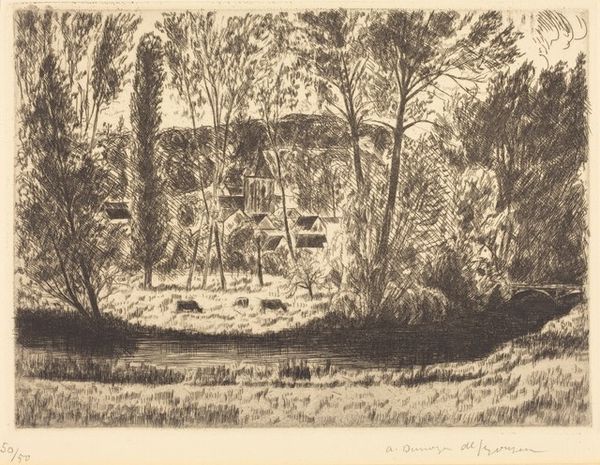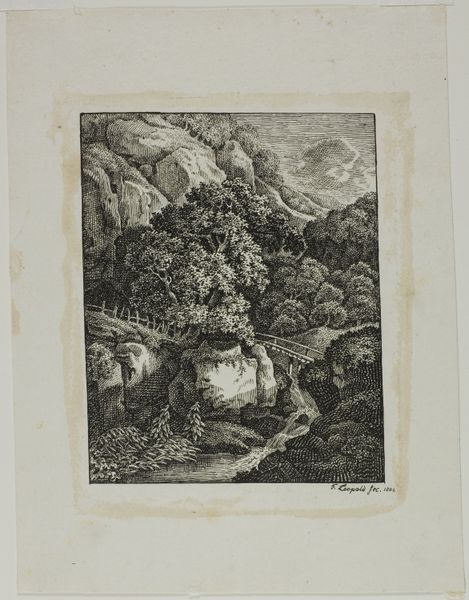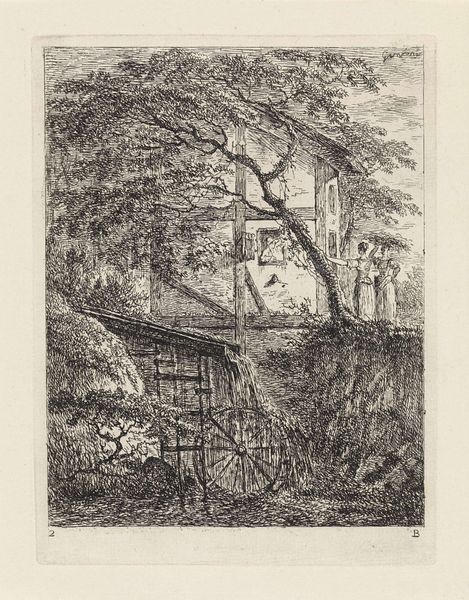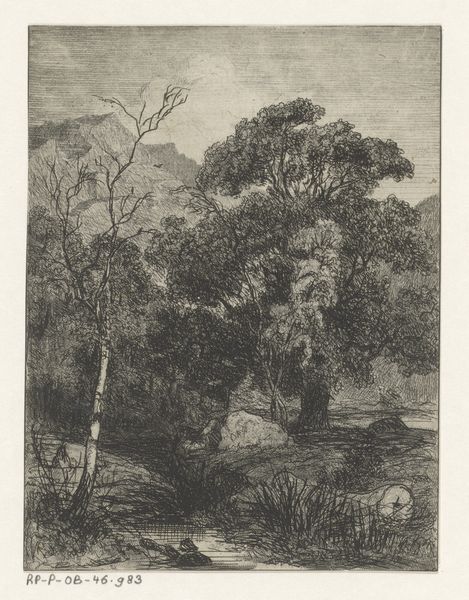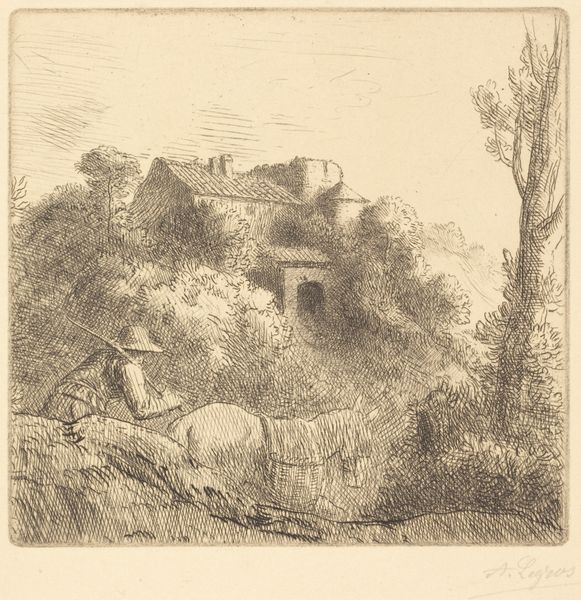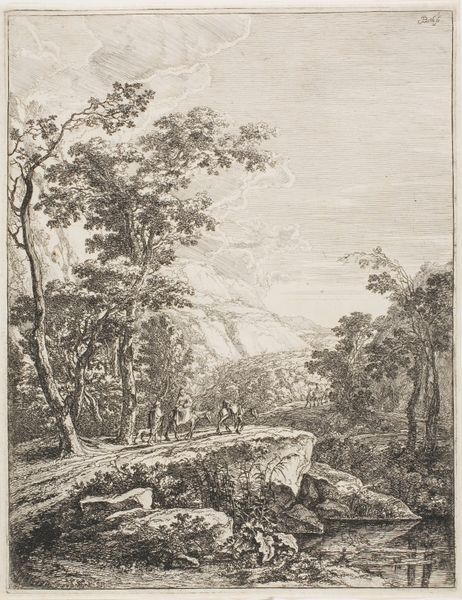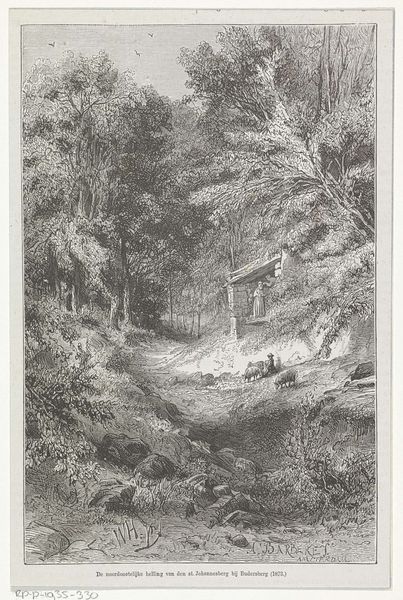
etching
#
pen sketch
#
etching
#
pencil sketch
#
landscape
#
waterfall
#
romanticism
#
line
Dimensions: height 198 mm, width 150 mm
Copyright: Rijks Museum: Open Domain
Gerard van Nijmegen created this print, "Man on a Bridge over a Waterfall," sometime in the late 18th century. The composition arranges itself through contrasts: the dark, dense foliage in the foreground against the light, open sky. The static, solid structure of the stone tower sharply opposes the fluid, dynamic movement of the waterfall. Nijmegen's use of hatching and cross-hatching generates a rich interplay of light and shadow, creating depth and texture. The man on the bridge acts as a semiotic marker, a signifier of human presence amidst the sublimity of nature, reflecting Enlightenment-era philosophical debates about man's place in the natural world. The bridge itself symbolizes a point of connection, a mediation between opposing forces. Ultimately, this print embodies a carefully constructed dialogue between nature and culture. The artist uses the formal elements of line and tone to evoke deeper questions about perception, representation, and our complex relationship with the environment.
Comments
No comments
Be the first to comment and join the conversation on the ultimate creative platform.
